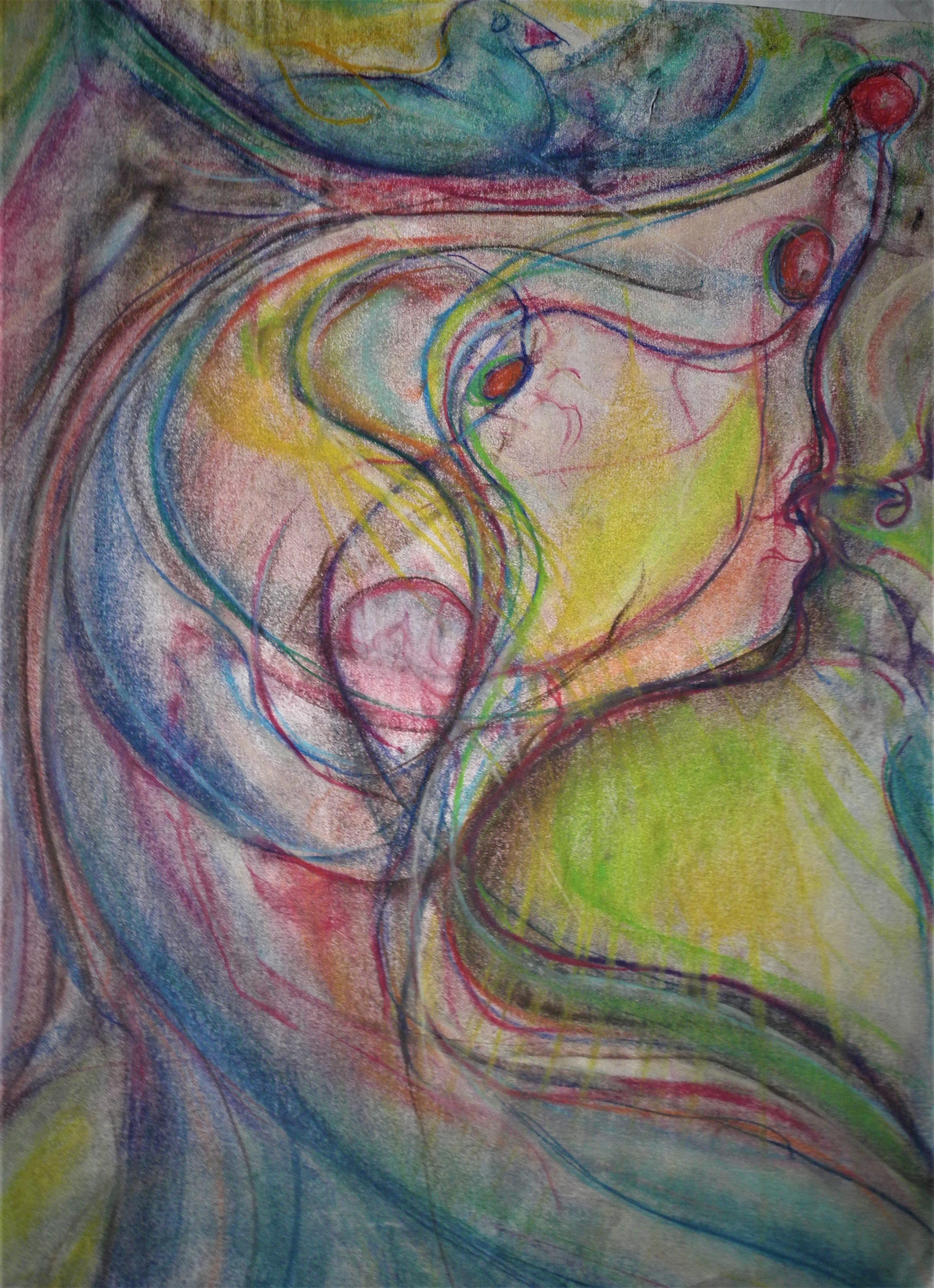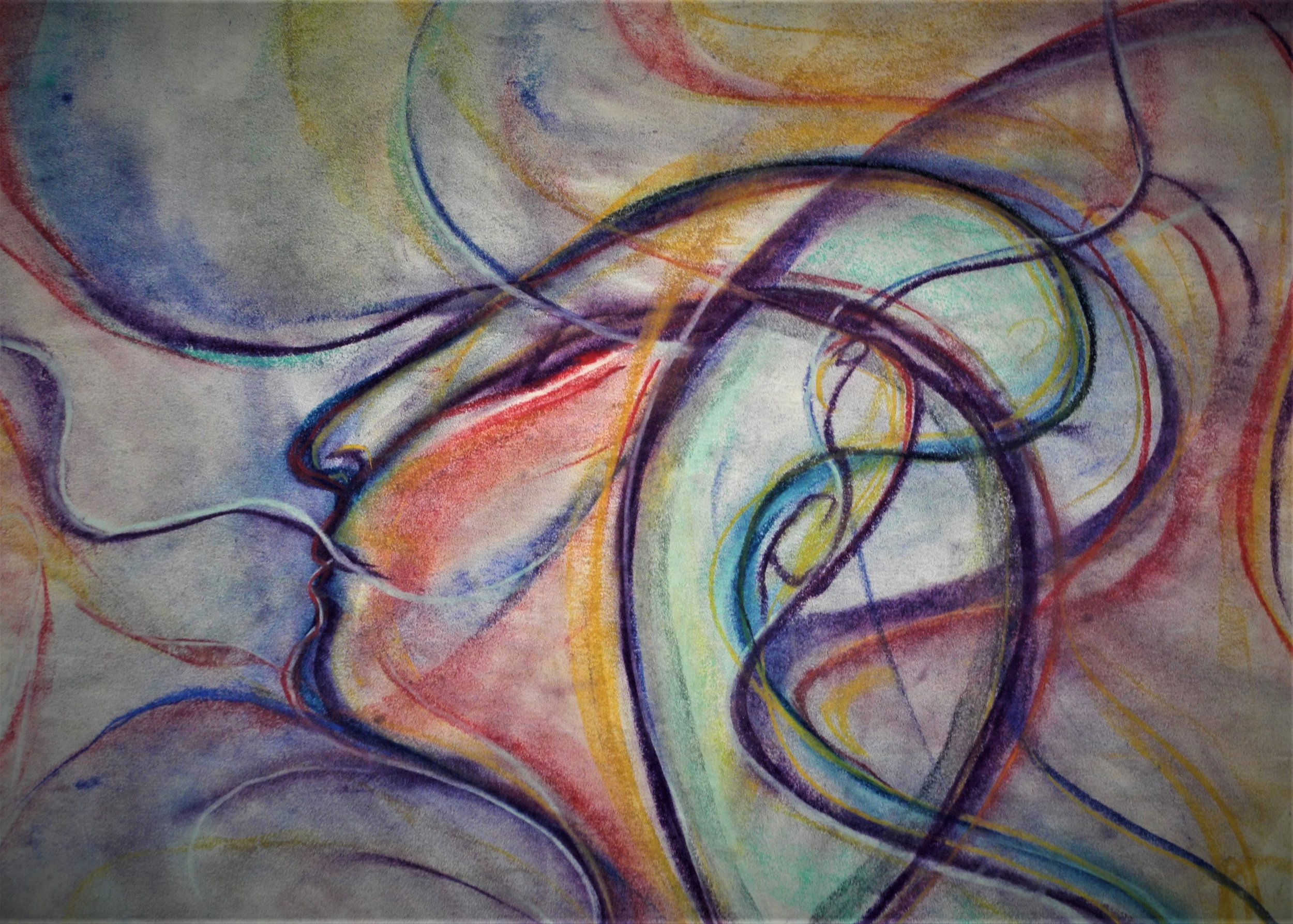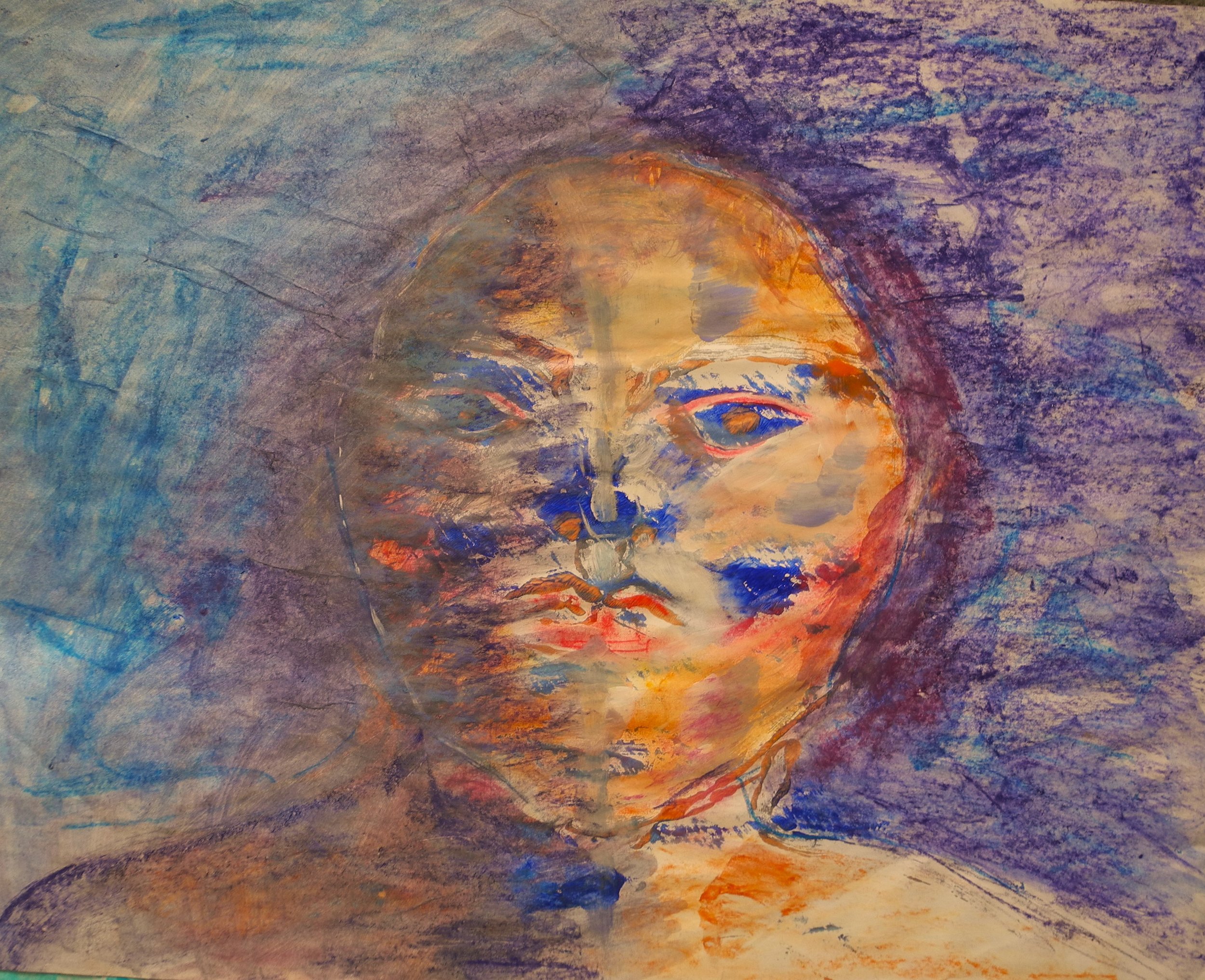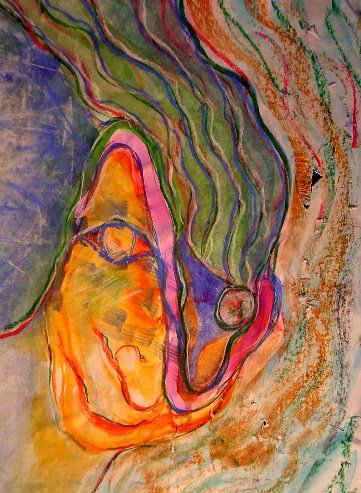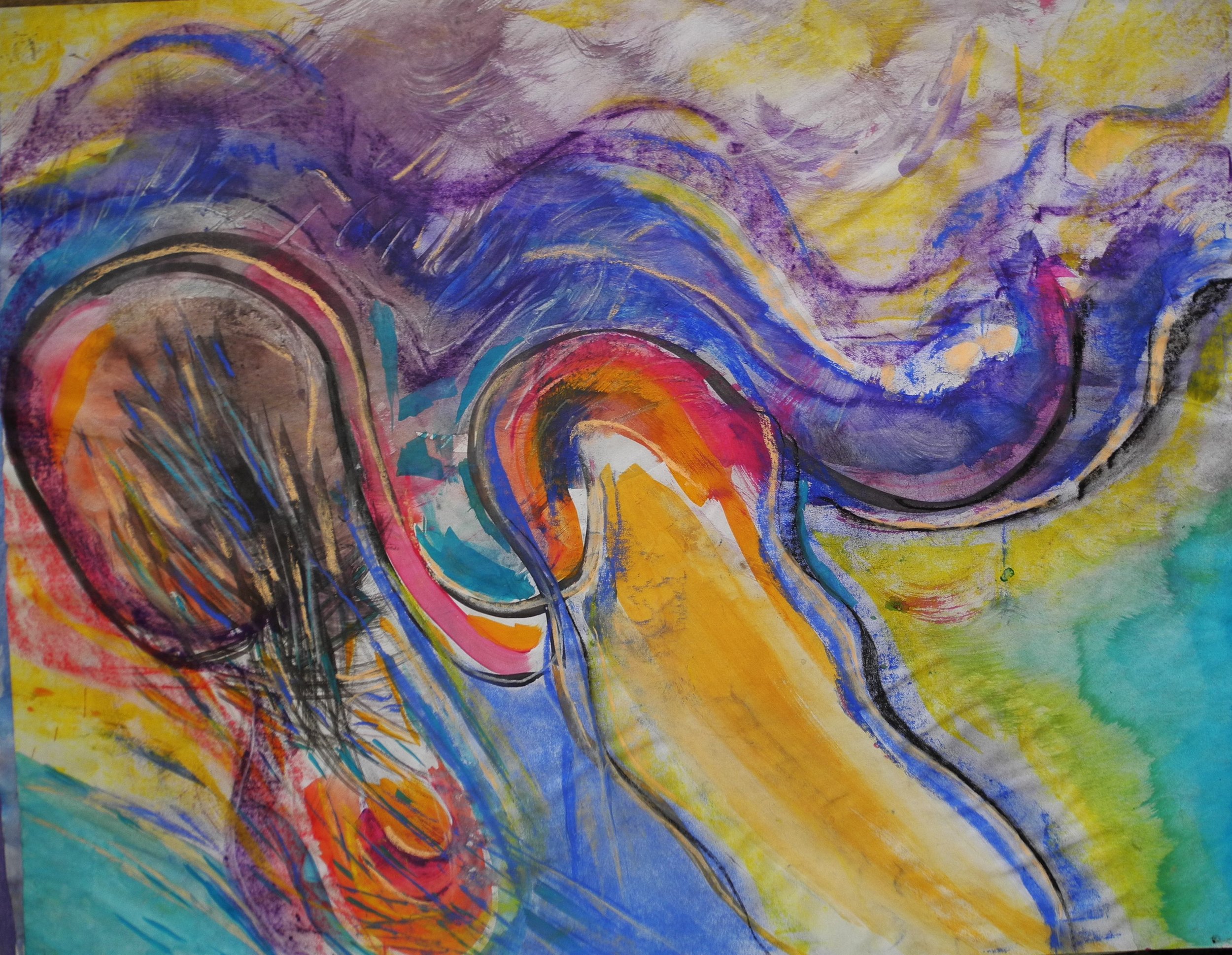
Faces of Psyche
Susanna Ruebsaat
Victoria, British Columbia, Canada
Artist Statement
It is the Breath of Psyche that animates the process of imaging.
I am standing in the world of image, the imaginal. Psyche imaging. Through many years of image-making since childhood, I have come to engage with others – students, clients, and many inner figures – in a manner that has become transformative. I realized that images were coming through the body…
Read More Below.
Essay
My story was viscerally telling itself through this body and the body of the world. The narrative was taking form in the interstitial layers between anima and anima mundi. Much later, through the influences of Jung, and Hillman in particular, I found the language for this deeply intuitive process.
I felt as if this discourse of depth and the archetypal was my true mother tongue. This discovery was like a homecoming to me.
I could now frame my ‘pictures’ within the clear and concise angles of a language that did not distance me from my direct experience of Psyche. I was elated. I felt a new strength to move further, deeper within the way of seeing Depth Psychology presented, trusting even more the guidance, teaching, and even challenges Psyche offered me through image, accepting these as the shaping of an “inner world’ that was rich, life-giving and demanded nothing less than everything.
My desire here is to present the type of consciousness I have come into through my own symbolic process and its interface with the teachings of Depth Psychology to open a space for “an inner world” and self-reflection on how phenomena and perception create consciousness.
One of these portals to the imaginal, mundus imaginalis visited me in the form of losing my eyesight completely for some time with an eventual 50% return of vision.
This visitation was an uninvited guest, and now I was truly being asked to listen to the words of Rilke (1995 tr,): “The work of seeing is done. Now do heart work upon the images within you”. I needed to draw in the deep breath of Psyche to dive deeper with her into the abyss and begin learning ‘how to find an image in the dark.’
This voyage from light to dark, and half-way back brought me to a kaleidoscopic way of seeing in which my mind developed new patterns of perception and, hence, meaning-making of this new world I found myself in. Now, I needed to LISTEN to the images and feel their ache.
In the workshops I facilitated, participants were asked what cultivating an inner I/eye meant to them in terms of exploring self-image.
These are some of their verbal and visual responses: Inner awareness as a level of emotions and sensations and thoughts: an inner eye, looking: Myself looking inside. Merging creativity and spirituality with flow, Spiritual creative journey. Sense of self. Integration and fluidity; a sense of personal aesthetic and meaning. New awareness. We began each session with an inner focus with eyes closed.
When we worked with our eyes closed we did not have access to the visual channel and so needed to find other ways of orientating ourselves. This brought forward a visceral approach to being in the world, which helped us become more in touch with inner processes. We discovered that these sources were both internal and external.
When we worked with our eyes closed in this manner, there was often a symmetry between inner and outer occurring in our experience.
When vision was re-introduced into the process, it was no longer as much the dominant source of orientation, and uninvited guests began to be included in the discovery of self image: self as ‘other’, ‘other’ as self in a rich dialogue mirroring the ongoing interrelationship of the conscious and unconscious.
Through personifying and amplifying inner figures that appeared spontaneously in the art and dialoguing with them, participants entered a symbolic way of being. They became more aware of the archetypal dynamics in their lives and could receive and/or engage these through an ‘open house’ attitude, a mythic sensibility that deepens experience.
Where is your home?
Check out Nostalgia and Longing for Home, a FREE mini-course by James Hollis, Ph.D., a renowned Jungian analyst.







